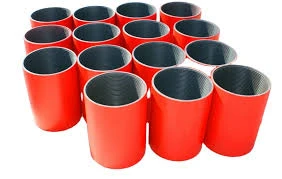- Afrikaans
- Albanian
- Amharic
- Arabic
- Armenian
- Azerbaijani
- Basque
- Belarusian
- Bengali
- Bosnian
- Bulgarian
- Catalan
- Cebuano
- Corsican
- Croatian
- Czech
- Danish
- Dutch
- English
- Esperanto
- Estonian
- Finnish
- French
- Frisian
- Galician
- Georgian
- German
- Greek
- Gujarati
- Haitian Creole
- hausa
- hawaiian
- Hebrew
- Hindi
- Miao
- Hungarian
- Icelandic
- igbo
- Indonesian
- irish
- Italian
- Japanese
- Javanese
- Kannada
- kazakh
- Khmer
- Rwandese
- Korean
- Kurdish
- Kyrgyz
- Lao
- Latin
- Latvian
- Lithuanian
- Luxembourgish
- Macedonian
- Malgashi
- Malay
- Malayalam
- Maltese
- Maori
- Marathi
- Mongolian
- Myanmar
- Nepali
- Norwegian
- Norwegian
- Occitan
- Pashto
- Persian
- Polish
- Portuguese
- Punjabi
- Romanian
- Russian
- Samoan
- Scottish Gaelic
- Serbian
- Sesotho
- Shona
- Sindhi
- Sinhala
- Slovak
- Slovenian
- Somali
- Spanish
- Sundanese
- Swahili
- Swedish
- Tagalog
- Tajik
- Tamil
- Tatar
- Telugu
- Thai
- Turkish
- Turkmen
- Ukrainian
- Urdu
- Uighur
- Uzbek
- Vietnamese
- Welsh
- Bantu
- Yiddish
- Yoruba
- Zulu
api tubing couplings
API Tubing Couplings Essential Components in Oil and Gas Operations
In the intricate world of oil and gas exploration and production, various components play pivotal roles in ensuring the efficient and safe extraction of hydrocarbons. Among these components, API tubing couplings stand out as essential elements that facilitate the connection of pipes utilized in drilling and production operations. This article delves into the significance of API tubing couplings, their specifications, and their application in the industry.
Understanding API Tubing Couplings
API tubing couplings are designed according to the standards set by the American Petroleum Institute (API). These couplings are critical for connecting lengths of tubing, which transport oil and gas from the reservoir to the surface. Typically, these couplings are fabricated using high-strength steel to withstand the extreme pressures and corrosive environments often encountered in subsurface operations. The API specifications ensure that these couplings are manufactured to be reliable, durable, and efficient in their performance.
Key Specifications
API tubing couplings are typically categorized based on their size, grade, and connection type. The grades, such as H-40, J-55, K-55, N-80, L-80, and P-110, determine the strength and resistance properties of the couplings. Higher grades denote stronger materials capable of withstanding greater pressures and harsher conditions, making them suitable for deepwell and high-pressure applications.
The sizes of tubing couplings range from under two inches to several inches in diameter, accommodating various well designs and configurations. Couplings also come with different end connections, including threaded, butt-welded, and special types suited for specific applications. The choice of coupling design is crucial, as it affects the overall integrity of the tubing string and influences the efficiency of hydrocarbon transport.
Applications in the Oil and Gas Industry
api tubing couplings

API tubing couplings are used extensively in both exploratory and production phases of oil and gas operations. In the drilling phase, they connect sections of tubing that are lowered into the wellbore, allowing for the extraction of oil or gas from the reservoir. During production, these couplings ensure a secure and leak-free connection between the tubing and the surface equipment, facilitating the continuous flow of hydrocarbons.
Additionally, API couplings play a vital role in ensuring safety during operations. A well-designed coupling can minimize the risk of leaks, which can lead to hazardous situations. Given the potential for severe environmental and economic repercussions due to leaks and failures, the integrity of coupling connections is paramount.
Innovations and Future Trends
The oil and gas industry is continually evolving, and with it, the technology surrounding tubing couplings is advancing. Recent innovations include the development of coupling designs that enhance resistance to corrosion and wear, prolonging their lifespan and reliability. Furthermore, manufacturers are exploring new materials and coatings that can improve the performance of couplings in extreme conditions.
As the industry leans towards more eco-friendly practices and the pursuit of cleaner energy alternatives, the adaptations of tubing couplings may reflect these broader trends. Enhanced materials and designs could result in more efficient resource extraction processes, minimizing the environmental footprint of oil and gas operations.
Conclusion
API tubing couplings are foundational elements in the oil and gas industry, playing a crucial role in the connection of tubing systems used for hydrocarbon extraction. With stringent API standards, these couplings ensure reliability, safety, and efficiency in operations. As technology continues to advance, the future of API tubing couplings promises innovations that will enhance performance and sustainability, helping the industry adapt to a rapidly changing energy landscape. Understanding these components is essential for professionals in the field, ensuring that operations meet both operational goals and safety standards.
-
Well Casing Extension Couplings – Applications and InstallationNewsJun.06,2025
-
Types of Crossover Subs in Drilling & CompletionNewsJun.06,2025
-
Key Features of High-Quality Tubing Pup JointsNewsJun.06,2025
-
Installation and Maintenance Tips for Steel Couplings for PipeNewsJun.06,2025
-
How to Select the Right Pup Joint for Oil & Gas OperationsNewsJun.06,2025
-
Applications of Stainless Steel Pipe CouplingsNewsJun.06,2025







